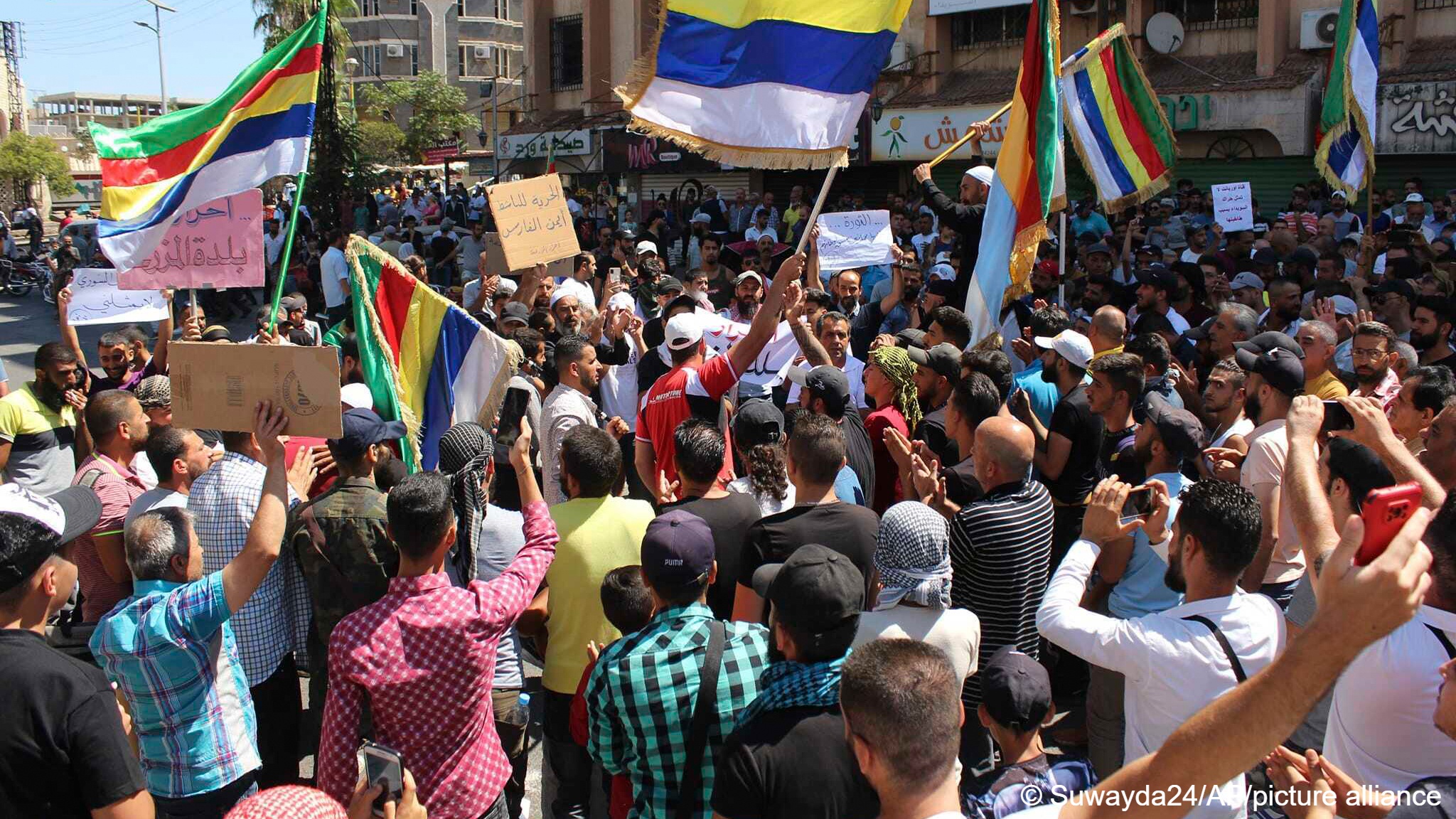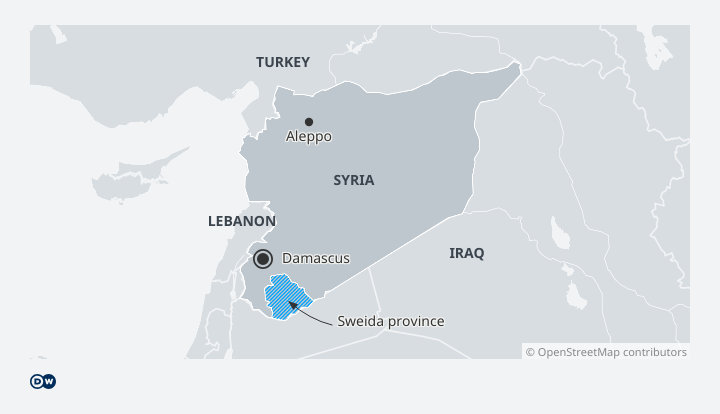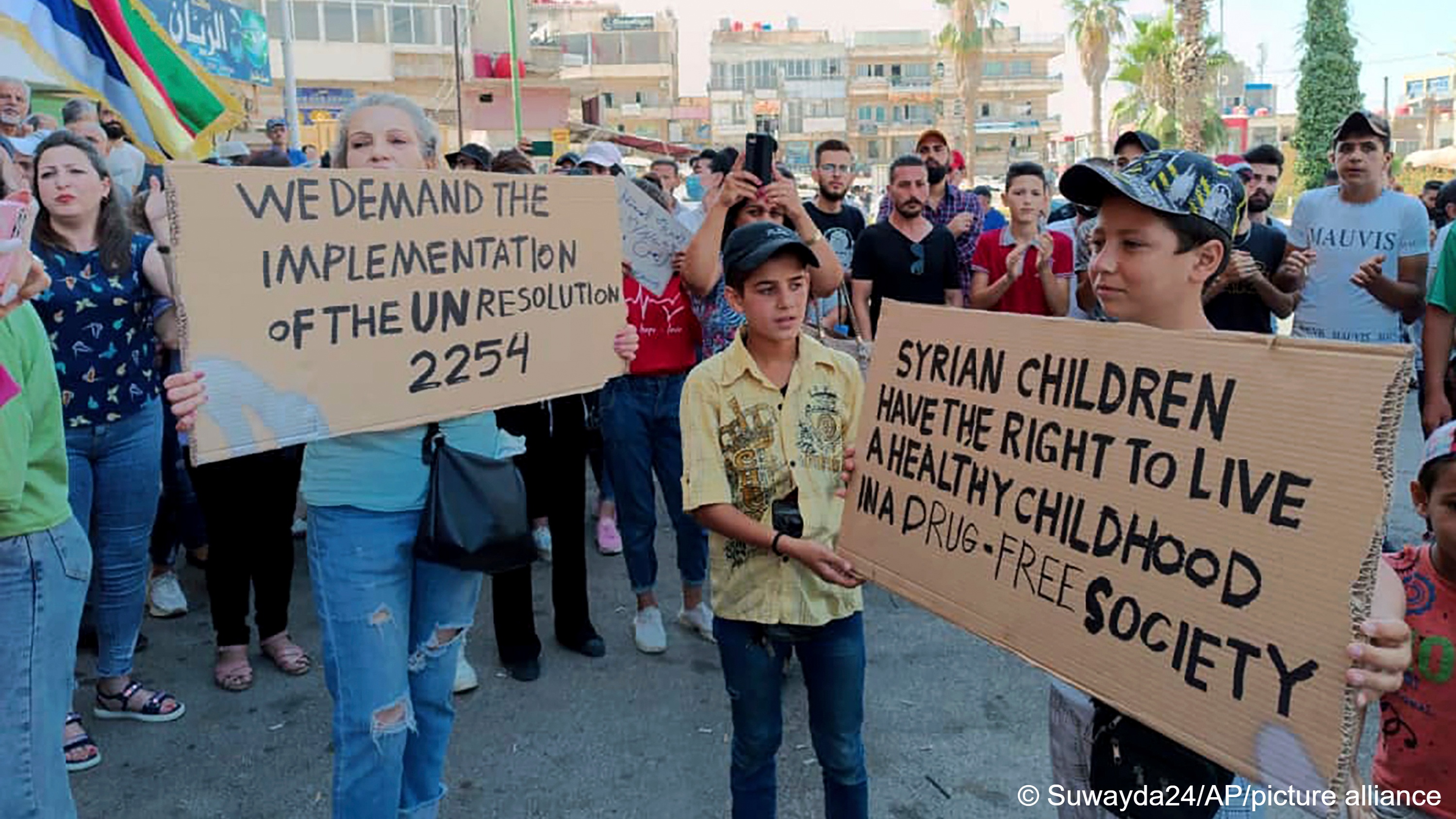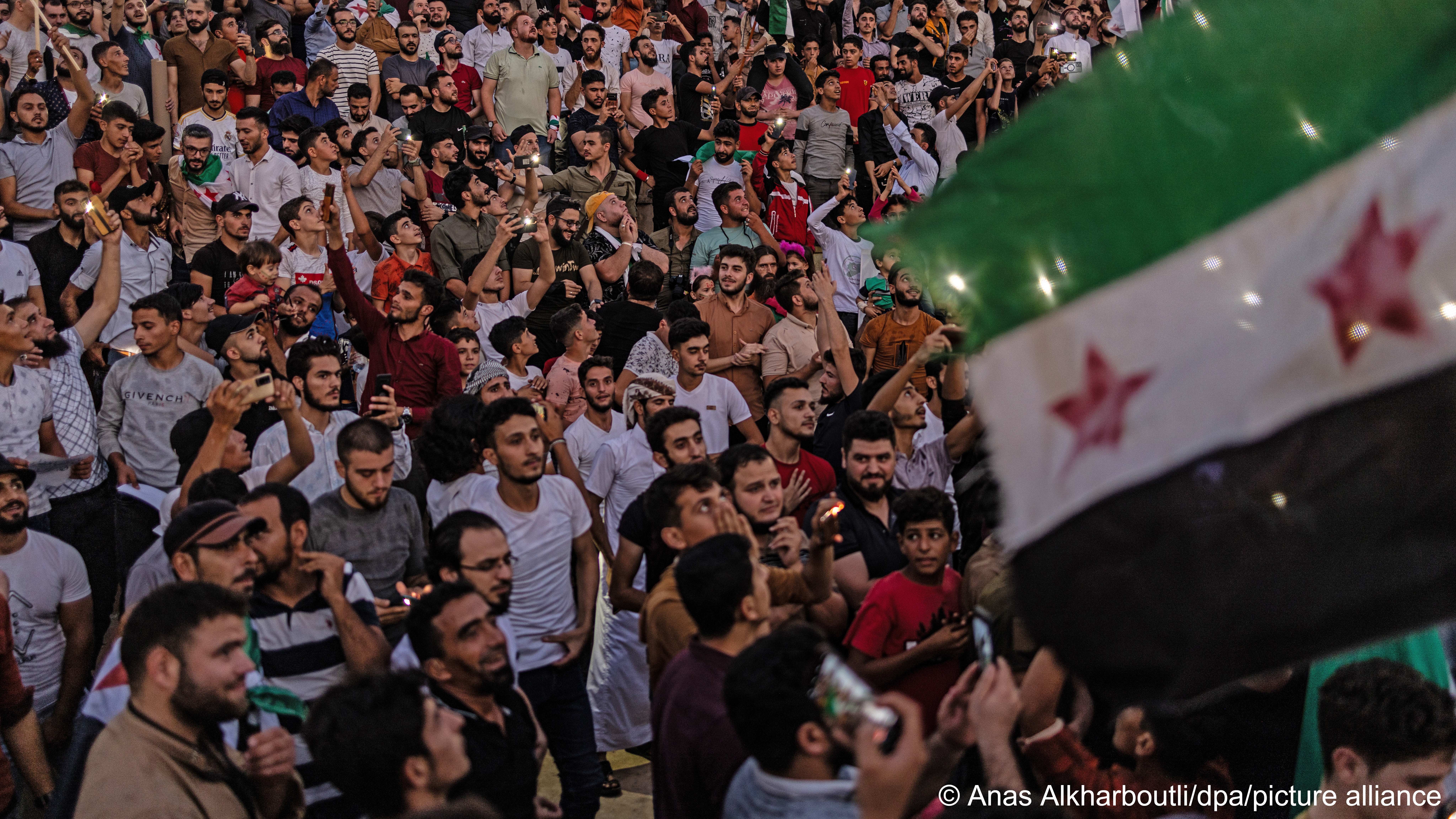New wave of violence after protester death?

Locals in the city of Sweida in south-western Syria have been demonstrating against their government since mid-August last year and up until late February, the protests had been peaceful.
They had included art exhibitions and cultural shows. Demonstrators regularly cleaned up afterwards and even served food to local police.
And despite the fact that the Syrian government has used chemical weapons on its own people, detained and tortured thousands, and is seen as responsible for nearly half a million dead and millions more Syrians displaced, government security forces had not acted against Sweida's protesters.
But in late February, after security forces fired their guns during a protest outside a government office, one local man, Jawad al-Barouki, 52, died and another was badly injured.
"In Sweida, we are well aware that bullets are the regime's preferred method," Lubna Albassit, one of the protesters in the province, said when asked if people were more frightened about protesting now. "We know it was waiting for our movement to fade away. But as the demonstrations have gone on, it began to try and intimidate us."
But it won't work, a determined Albassit continued. "These bullets will not frighten us. We already knew that we'd have to face their bullets at some stage – even just for protesting peacefully."

New wave of violence against peaceful protesters?
The protests in Sweida were sparked by economic dissatisfaction, and high petrol prices in particular, but have evolved into something more political. Protesters in Sweida say they want the same thing as the Syrians who originally demonstrated in the 2011 revolution that turned into a bloody civil war, namely the end of the regime headed by Syrian dictator Bashar al-Assad.
But observers don't think Assad will act the same way in Sweida as he did elsewhere.
"The regime's betting that the movement will eventually fade out," said Fadel Abdul Ghany, head of the Syrian Network for Human Rights, or SNHR, a Netherlands-based monitor of human rights violations. "Sure, there are protesters on the street requesting democratic change. But this is still just a local movement and the regime, which is reading the room very carefully, doesn't think an escalation would benefit it."
"Given the very bloody history of the [Assad] regime and all the crimes we know it has committed, at some point in the future it could grow impatient and decide to move," added Mohammed Alaa Ghanem, policy chief of the American Coalition for Syria based in Washington. "However I don't think the incident last week necessarily portends more violence."

There are a number of reasons for that, he told DW.
One revolves around the message the Sweida protests are sending. "These protests have been incredibly important because they've struck a blow at the heart of one of the regime's long standing narratives, that it is a champion and protector of minorities in Syria," Alaa Ghanem explained.
For years, the Assad government claimed pro-democracy protesters were Islamist extremists who would turn on the country's minorities if they ever came to power. But the protests in Sweida, a province that is home to much of Syria's Druze minority, refute that.
"We are seeing one of the largest minorities in Syria coming out and saying this guy has to go, his rule has been disastrous," Alaa Ghanem continued. "That's why the regime has been careful not to employ the same violent tactics it has consistently applied elsewhere."
The Assad government also has to consider how moving openly against the Druze community would look, given a current trend for other Arab nations to start to normalise with Assad again after isolating Syria for years during the civil war.
What the protests have achieved
Despite being a comparatively small and localised movement, the Sweida protests have been effective in many ways.
There's not been a single day in the past seven months that central Karama (Dignity) square in Sweida has not been occupied, Alaa Ghanem noted. The protesters have managed to close the offices of Assad's political party in their province, turning them into schools, clinics and community centres. They have also formed unions and other groups. Women have taken a leading role in the Sweida protests.
It's even been suggested that Sweida could become an autonomous area, ruling itself semi-independently of the Syrian government.

It might "resemble the other southern regions – Daraa and Quneitra – because the situation is quite similar," Rayan Maarouf, editor-in-chief of the local media network Suwayda 24, told online publication Syria Direct late last year. "[There] security authority is absent, its presence a formality. People demonstrate and the local community plays a bigger role in governance," the journalist noted.
"People here feel that they have been left to face their fate alone and have been betrayed by many," Louay Hadifa, an activist involved in the Suwayda protests, told DW. "We will remain affiliated with Syria but we may want to follow the example of federal countries such as Germany or the US."
It is unclear how many protesters in Sweida agree with that idea. Albassit, for one, doesn't, seeing it as a way for Assad to remain in power. "We want a homeland for all Syrians. The Syrian revolution was and will remain a voice for every Syrian," she argued.
No matter what happens next, the Sweida protests remain "a source of hope for the Syrian fight for freedom, reminding the world why Syrians began protesting 13 years ago," Afraa Hashem, an activist with The Syria Campaign, confirms. They show that "the Syrian revolution is far from over … they are about justice and a better future for Syria."
© Deutsche Welle 2024
